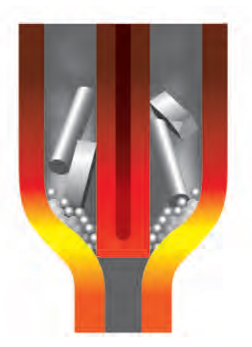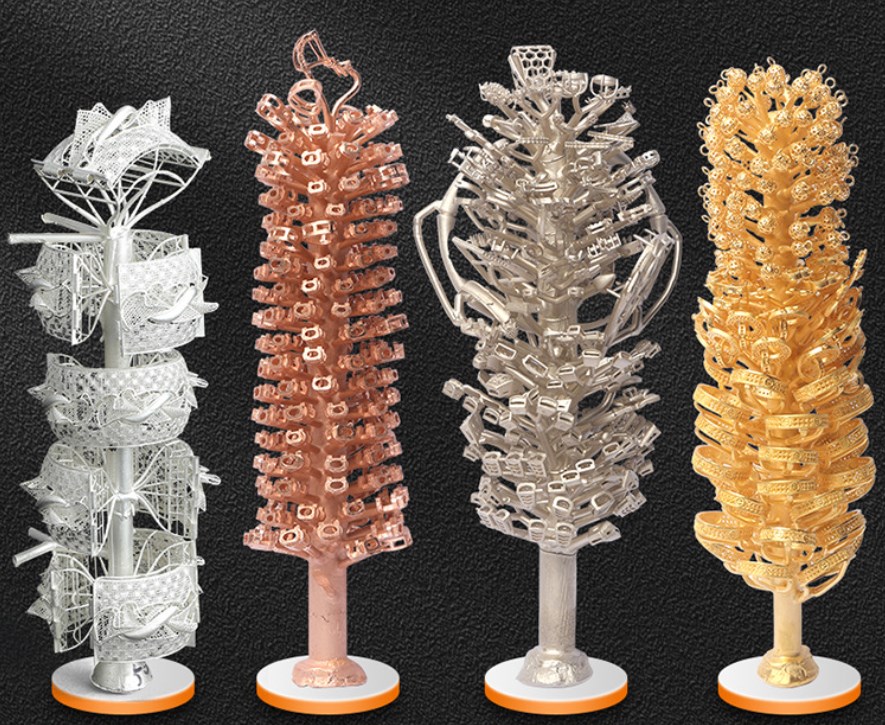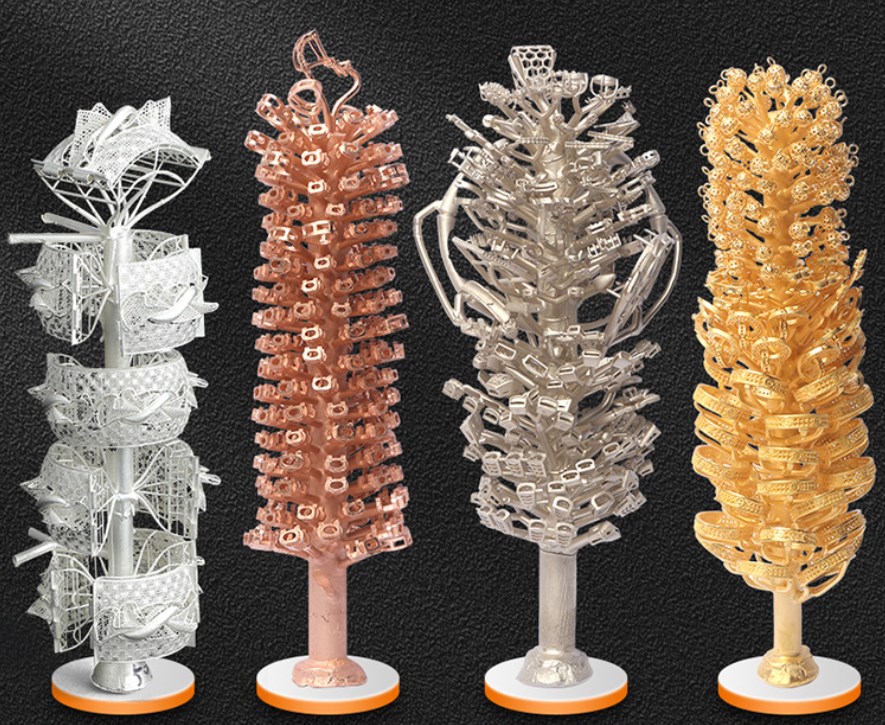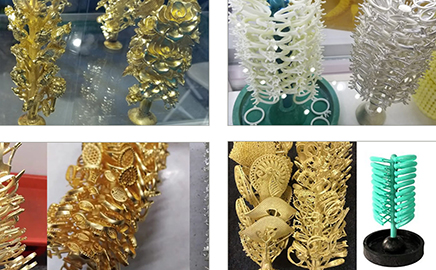
Hasung T2 Jewelry Vacuum Pressure Casting Machine
Why Do You Choose Hasung Vacuum Pressure Casting Machine?
Hasung T2 Vacuum Casting Machines compare to other companies
1. Precise casting performance
2. Good melting speed. Melting speed is within 2-3 minutes.
3. Strong casting pressure.
4. Hasung's original components are well-known brands from domestic, Japan and Germanu.
5. Precise casting performance
6. Support 100 program memories
7. Energy saving. With low power consumption 10KW 380V 3 phase.
8. Using nitrogen or argon only, no need to connect to compressor air.
Technical Parameters
| Model No. | HS-T2 |
| Voltage | 380V, 50/60Hz, 3 phases |
| Power Supply | 10KW |
| Max Temp | 1500°C |
| Melting Time | 2-3 min. |
| Protective Gas | Argon / Nitrogen |
| Temp Accuracy | ±1°C |
| Capacity (Gold) | 24K: 2.0Kg, 18K: 1.55Kg, 14K: 1.5Kg, 925Ag: 1.0Kg |
| Crucible Volume | 242CC |
| Max flask size | 5"x12" |
| Vacuum Pump | High quality vacuum pump |
| Application | Gold, K gold, silver, copper and other alloys |
| Operation method | One key finishes the entire casting process |
| Cooling type | Water chiller(sold separately) or Running water |
| Dimensions | 800*600*1200mm |
| Weight | approx. 230kg |
Product Display






Title: The Evolution of Gold Jewelry Casting Technology: From Ancient Techniques to Modern Innovations
For centuries, gold jewelry has been a symbol of wealth, status and beauty. From ancient civilizations to modern fashion, the charm of gold remains the same. One of the key processes in creating gold jewelry is casting, which has evolved significantly over time. In this blog, we will explore the fascinating journey of gold jewelry casting technology, from its early developments to today’s cutting-edge innovations.
Ancient Technology: The Birth of Gold Casting
The history of gold casting can be traced back to ancient civilizations such as Egypt, Mesopotamia, and China. These early craftsmen developed basic casting techniques using simple molds made of clay, sand, or stone. The process involves heating the gold until it reaches a molten state and then pouring it into prepared molds to create the jewelry.
While these ancient methods were groundbreaking for their time, they were limited in accuracy and complexity. The resulting jewelry often has a rough and raw appearance, lacking the fine detail and intricate designs that characterize modern gold jewelry.
Medieval Progress: The Rise of Lost Wax Casting
During the Middle Ages, major advances in gold casting technology occurred with the development of lost wax casting technology. This method revolutionized the casting process, allowing craftsmen to create more complex and detailed jewelry pieces.
The lost wax casting process involves creating a wax model of the desired jewelry design, which is then encapsulated in a mold made of plaster or clay. The mold is heated, causing the wax to melt and evaporate, leaving a cavity in the shape of the original wax model. Molten gold was then poured into the cavity, creating a precise and detailed replica of the wax model.
This technology marked a major leap forward in the art of gold casting, allowing craftsmen to produce jewelry with intricate patterns, delicate filigree work, and fine textures that were previously unachievable.
Industrial Revolution: Mechanized Casting Process
The Industrial Revolution brought a wave of technological advancement that revolutionized manufacturing processes in various industries, including jewelry production. During this period, mechanized casting processes were introduced, allowing the mass production of gold jewelry.
One of the key innovations was the development of the centrifugal casting machine, which used centrifugal force to evenly distribute molten gold into the mold. This automated process significantly increases the efficiency and consistency of gold casting, resulting in higher output and more standardized jewelry pieces.
Modern innovation: digital design and 3D printing
In recent decades, the emergence of digital design and 3D printing technology has changed the landscape of gold jewelry casting. These cutting-edge innovations have revolutionized the way jewelry designs are created and translated into physical objects.
Digital design software enables jewelry designers to create intricate 3D models with unprecedented precision and detail. These digital models can then be transformed into physical prototypes using 3D printing technology, which builds jewelry layer by layer using a variety of materials, including wax for casting.
The use of 3D printing in gold jewelry casting opens up new possibilities for creating highly complex and customized designs that were previously unachievable through traditional casting methods. The technology also streamlines the prototyping and production process, reducing lead times and enabling faster iterations of jewelry designs.
Additionally, advances in metallurgical and alloying technology have facilitated the development of new gold alloys with enhanced properties such as increased strength, durability, and color changes. These innovative alloys expand the creative possibilities for jewelry designers and manufacturers, allowing them to push the boundaries of traditional gold jewelry aesthetics.
The future of gold jewelry casting technology
As technology continues to advance, the future of gold jewelry casting holds even more exciting possibilities. Emerging technologies such as additive manufacturing and advanced robotics are expected to further revolutionize the casting process, bringing new levels of precision, efficiency and customization.
Additionally, integrating artificial intelligence and machine learning algorithms into jewelry design and production workflows has the potential to optimize the casting process, minimize material waste, and improve the overall quality of finished jewelry.
In conclusion, the evolution of gold jewelry casting technology is a testament to the ingenuity and innovation of craftsmen and technicians throughout history. From the ancient technique of lost wax casting to the modern marvels of digital design and 3D printing, the art of gold casting continues to evolve to meet the needs of the ever-changing times.
Looking to the future, it is clear that the fusion of traditional craftsmanship and cutting-edge technology will continue to shape the landscape of gold jewelry casting, providing endless possibilities for creativity, customization and quality in the fine jewelry world.
Vacuum pressure casting machine consumables:
1. Graphite crucible
2. Ceramic gasket
3. Ceramic jacket
4. Graphite stopper
5. Thermocouple
6. Heating coil
- English
- French
- German
- Portuguese
- Spanish
- Russian
- Japanese
- Korean
- Arabic
- Irish
- Greek
- Turkish
- Italian
- Danish
- Romanian
- Indonesian
- Czech
- Afrikaans
- Swedish
- Polish
- Basque
- Catalan
- Esperanto
- Hindi
- Lao
- Albanian
- Amharic
- Armenian
- Azerbaijani
- Belarusian
- Bengali
- Bosnian
- Bulgarian
- Cebuano
- Chichewa
- Corsican
- Croatian
- Dutch
- Estonian
- Filipino
- Finnish
- Frisian
- Galician
- Georgian
- Gujarati
- Haitian
- Hausa
- Hawaiian
- Hebrew
- Hmong
- Hungarian
- Icelandic
- Igbo
- Javanese
- Kannada
- Kazakh
- Khmer
- Kurdish
- Kyrgyz
- Latin
- Latvian
- Lithuanian
- Luxembou..
- Macedonian
- Malagasy
- Malay
- Malayalam
- Maltese
- Maori
- Marathi
- Mongolian
- Burmese
- Nepali
- Norwegian
- Pashto
- Persian
- Punjabi
- Serbian
- Sesotho
- Sinhala
- Slovak
- Slovenian
- Somali
- Samoan
- Scots Gaelic
- Shona
- Sindhi
- Sundanese
- Swahili
- Tajik
- Tamil
- Telugu
- Thai
- Ukrainian
- Urdu
- Uzbek
- Vietnamese
- Welsh
- Xhosa
- Yiddish
- Yoruba
- Zulu
- Kinyarwanda
- Tatar
- Oriya
- Turkmen
- Uyghur



























